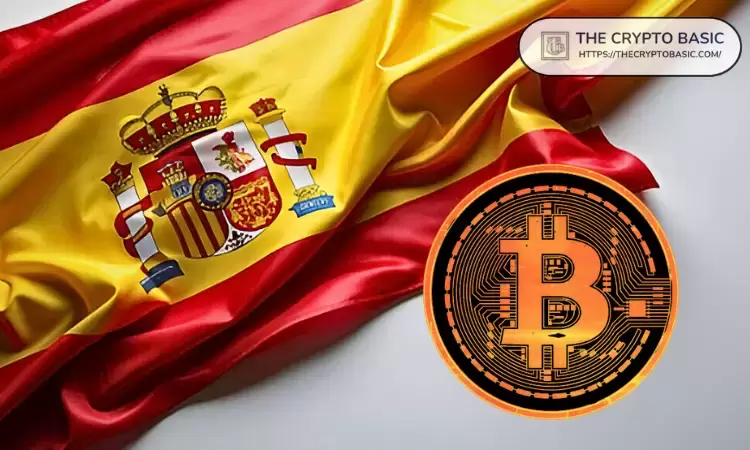 |
|
 |
|
 |
|
 |
|
 |
|
 |
|
 |
|
 |
|
 |
|
 |
|
 |
|
 |
|
 |
|
 |
|
 |
|
比特幣是最大,最知名的加密資產,但作為第一個區塊鏈,它是為了安全性和簡單性而不是智能合約而設計的。可編程性是事後的想法。

Bitcoin’s foray into decentralized finance (DeFi) has been a gradual yet persistent process, largely driven by the growing demand for BTC liquidity and the limitations of Bitcoin’s base layer, which lacks the native programmability to support smart contract applications.
比特幣進入分散融資(DEFI)是一個逐漸但持久的過程,這在很大程度上是由於對BTC流動性的不斷增長的需求以及比特幣基礎層的局限性所驅動的,該基礎層缺乏支持智能合約應用的本地可編程性。
However, this challenge has spurred the development of various solutions that expand BTC’s functionality, enabling users to earn yield and access DeFi applications while preserving Bitcoin’s renowned security and decentralization. These solutions include Bitcoin Layer 2s, restaking protocols, and alternative BTCFi innovations.
但是,這一挑戰激發了各種解決方案的開發,這些解決方案擴大了BTC的功能,使用戶能夠在保留比特幣著名的安全性和分散性的同時賺取收益率和訪問Defi應用程序。這些解決方案包括比特幣第2層,重新製作協議和替代性BTCFI創新。
Bitcoin Layer 2s
比特幣第2層
Bitcoin Layer 2 networks are built on top of the Bitcoin blockchain to address its scalability challenges, offering solutions that improve transaction speed, lower fees, and enhance functionality.
比特幣第2層網絡建立在比特幣區塊鏈的頂部,以應對其可擴展性挑戰,提供提高交易速度,較低費用和增強功能的解決方案。
The main types of Bitcoin L2 solutions include:
比特幣L2解決方案的主要類型包括:
State Channels: State channels move transactions off-chain, allowing users to bypass high transaction fees. In practice, two parties lock Bitcoin into a multisig wallet and send payments within the channel, which keeps a record of all transactions until it’s closed. Once they finish transacting, the parties sign and broadcast the final channel state to Bitcoin’s Layer 1 as a single transaction.
狀態渠道:州渠道將交易移開鏈,使用戶繞過高交易費用。在實踐中,兩個方將比特幣鎖定在多西格錢包中,並在渠道內發送付款,這可以保留所有交易的記錄,直到關閉。一旦完成交易,各方便會簽名並廣播最終渠道狀態,以單個交易為單一交易。
This setup significantly reduces costs by reporting only the opening and closing balances to the Bitcoin network, eliminating the need to pay mainnet fees for every transaction.
該設置僅通過向比特幣網絡報告開放餘額和關閉餘額來大大降低成本,從而無需為每筆交易支付主網費用。
Side Chains: A sidechain is an independent blockchain that runs in parallel to Bitcoin’s Layer 1 and is connected to Bitcoin through a two-way bridge. While sidechains often use Bitcoin as their native currency, they can also issue their own native tokens.
側鏈:Sidechain是一個獨立的區塊鏈,與比特幣的第1層並行運行,並通過雙向橋連接到比特幣。雖然Sidechains經常將比特幣用作其原始貨幣,但他們也可以發行自己的本土令牌。
Unlike true Layer 2 solutions, Sidechains have separate consensus mechanisms rather than fully leveraging Bitcoin’s security or verification process. However, some sidechains periodically settle on the main chain or leverage Bitcoin’s security to varying degrees.
與真實的第2層解決方案不同,Sidechains具有單獨的共識機制,而不是完全利用比特幣的安全性或驗證過程。但是,某些側級會定期定居主鏈,或者在不同程度上利用比特幣的安全性。
A defining feature of sidechains is their communication bridge with Bitcoin, which involves locking assets on the Bitcoin network and minting an equivalent amount on the sidechain.
Sidechains的一個定義特徵是他們與比特幣的通信橋,該橋樑涉及在比特幣網絡上鎖定資產,並在Sidechain上造成等效量。
Rollups: Bitcoin Layer-2 rollups move transaction execution and data off Bitcoin’s Layer 1 to a separate rollup chain while leveraging Bitcoin for data availability and consensus. This solution allows transactions to be executed on the rollup chain, where data is compressed and periodically posted to Bitcoin’s Layer 1 for validation.
匯總:比特幣第2層匯總將事務執行和數據從比特幣的第1層移至單獨的匯總鏈,同時利用比特幣以獲得數據可用性和共識。該解決方案允許在匯總鏈上執行交易,其中數據被壓縮並定期發佈到比特幣的第1層以進行驗證。
Rollups primarily function as an execution layer, maintaining a relationship with the Bitcoin network as the consensus layer.
滾動主要充當執行層,並保持與比特幣網絡的關係作為共識層。
There are two types of rollups:
有兩種類型的匯總:
Optimistic Rollups: These rollups assume that all transactions are valid unless proven otherwise. They batch transactions off-chain and submit a single “rollup” transaction to Bitcoin’s Layer 1, which includes a Merkle root of all transactions and a fraud proof.
樂觀的匯總:這些匯總假定所有交易都是有效的,除非另有證明。他們將交易匯總鏈,並向比特幣的第1層提交單個“匯總”交易,其中包括所有交易的默克爾根和證明欺詐。
If any transaction is disputed, a sequencer can be penalized by slashing their bond, which serves as a deterrent against submitting invalid transactions.
如果有任何交易有爭議,則可以通過削減其債券來懲罰序列,這是對提交無效交易的威懾作用。
ZK Rollups: These rollups use advanced cryptography to generate a succinct proof that attests to the validity of all transactions in a batch without revealing individual transaction details. This proof is then included in the rollup transaction on Bitcoin’s Layer 1.
ZK匯總:這些匯總使用高級密碼學生成簡潔的證明,該證明證明了批次中所有交易的有效性,而沒有揭示單個交易細節。然後,該證明包含在比特幣1層上的匯總交易中。
Compared to Optimistic Rollups, ZK Rollups offer higher privacy and lower gas costs but require more technical expertise for development.
與樂觀的匯總相比,ZK匯總提供更高的隱私和較低的汽油成本,但需要更多的技術專業知識才能開發。
Here are some of the notable Bitcoin L2 networks:
這是一些著名的比特幣L2網絡:
Stacks: Stacks is a Bitcoin sidechain that operates on a Proof of Transfer (PoX) consensus mechanism. PoX combines Proof of Stake (PoS) and Proof of Burn to create a system that connects Bitcoin miners with Stack participants, known as “Stackers”.
堆棧:堆棧是一個以傳輸證明(POX)共識機制運行的比特幣SiDechain。 Pox結合了股份證明(POS)和燃燒證明,以創建一個將比特幣礦工與堆棧參與者(稱為“堆棧者”)聯繫起來的系統。
Similar to PoS, Stackers lock their STX tokens to secure the Stacks network and Bitcoin miners offer BTC to incentivize Stackers for the right to validate blocks. A miner’s selection chances increase based on how much BTC they commit to Stackers.
與POS類似,Stackers鎖定其STX令牌以確保堆棧網絡,而比特幣礦工則提供BTC,以激勵堆疊者以獲得驗證塊的權利。礦工的選擇機會根據他們承諾的堆棧者的數量而增加。
When a BTC miner is selected, they validate the block and earn STX rewards in return and their BTC rewards are proportional to the amount of STX they lock.
當選擇BTC礦工時,他們會驗證該塊並賺取STX獎勵以回報,其BTC獎勵與鎖定的STX數量成正比。
Stacks also features a native DEX called XSwap, a lending protocol called Arkadiko Finance, and a liquid staking service called Lido for Stacks. These applications, combined with Stacks’ EVM compatibility, contribute to a growing DeFi ecosystem on the Bitcoin sidechain.
堆棧還具有一個名為XSWAP的本機DEX,一種名為Arkadiko Finance的貸款協議,以及一種名為Lido for Stacks的液體樁服務。這些應用結合了堆棧的EVM兼容性,促成了比特幣Sidechain上不斷增長的Defi生態系統。
Rootstock Infrastructure Framework (RIF): Rootstock (RSK) is an EVM-compatible Bitcoin sidechain. It connects to the Bitcoin network via a two-way Proof of Work Peg (PoWPeg) protocol. This mechanism allows users to lock BTC on the Bitcoin network and mint RBTC on Rootstock at a 1:1 ratio.
rootstock基礎架構框架(RIF):rootstock(RSK)是與EVM兼容的比特幣Sidechain。它通過雙向工作證明PEG(POWPEG)協議連接到比特幣網絡。這種機制允許用戶以1:1的比例將BTC鎖定在BITCOIN網絡上,並在Rootstock上的Mint RBTC上鎖定RBTC。
Rootstock’s consensus layer mirrors Bitcoin’s, sharing the same hash rate through merged mining, where Bitcoin miners can validate blocks on both chains simultaneously. Miners on Rootstock are incentivized with RBTC.
Rootstock的共識層反映了比特幣的,通過合併的採礦共享相同的哈希速率,在該礦山中,比特幣礦工可以同時驗證這兩個鏈條上的塊。用RBTC激勵砧木上的礦工。
The Rootstock Infrastructure Framework (RIF) operates on top of the RSK blockchain, providing a suite of decentralized services for dApp development.
Rootstock基礎架構框架(RIF)在RSK區塊鏈的頂部運行,為DAPP開發提供了一套分散的服務。
Key components of RIF include:
RIF的關鍵組成部分包括:
RIF
rif
免責聲明:info@kdj.com
所提供的資訊並非交易建議。 kDJ.com對任何基於本文提供的資訊進行的投資不承擔任何責任。加密貨幣波動性較大,建議您充分研究後謹慎投資!
如果您認為本網站使用的內容侵犯了您的版權,請立即聯絡我們(info@kdj.com),我們將及時刪除。
-

- Shiba INU(SHIB)價格預測:技術指標表明潛在的激增
- 2025-04-24 19:10:12
- 市場觀察家將注意力轉移到什巴INU上,因為技術指標表明,流行的模因硬幣的潛在價格上漲。
-

- Hespérides大學推出了第一個西班牙語比特幣大師計劃
- 2025-04-24 19:10:12
- Hespérides大學宣布了一個專門針對比特幣的首個西班牙語碩士課程。
-

-

- 在過去的24小時內,唐納德·特朗普總統的祖國特朗普模因硬幣的價值飆升了65%以上
- 2025-04-24 19:05:12
- 今年早些時候推出的代幣是特朗普營地引起爭議的根源。
-

- 狗主人應該意識到草種子的危險以及它們如何對狗造成危險。
- 2025-04-24 19:00:11
- 雖然草種子看起來很小又無害,但獸醫慈善機構PDSA警告說,它們可能會對我們的四足朋友造成傷害。
-

- 在經濟不確定性的情況下,比特幣是避風港
- 2025-04-24 19:00:11
- 根據彭博情報公司最近的一項分析,面對經濟不確定性的日益嚴重,幾家大型公開交易的美國公司可能很快就會採用比特幣作為現金儲備的一部分。
-

- 比特幣BTC/USD可以收回$ 100,000
- 2025-04-24 18:55:12
- 加密貨幣分析公司10倍研究發現比特幣BTC/USD的現實可能性100000美元
-

-



























































